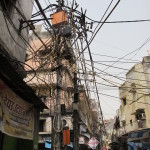
Old stone buildings, knitted together by webs of electrical lines, crowd the lanes and back alleys near the New Delhi railroad station, as well as the broader Main Bazaar Road, in the district named Paharganj. Most seem rickety and haphazardly built, looming over you when you pass through its narrow passageways.
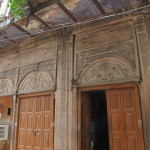
Some show touches of old prosperity with colorful decorative carvings or tiles now crumbling, or with fading facades of teakwood and graceful architectural detailing – as in the former homes of wealthy merchants. This was mainly a Muslim part of town before the partition in 1947. That accounts for the Islamic-inspired features on the buildings. But Paharganj is mainly Hindu now.
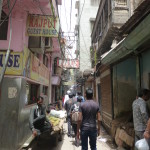
Over five hundred inexpensive hotels hide around every corner, some hanging over the lanes and all but touching others opposite them, ready to serve the millions that come and go by rail here. Most guests are Indian; a surprising number are young westerners making their way on the cheap around the country.
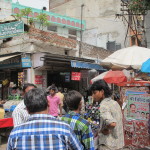
The streets teem with buyers and sellers of all sorts of goods – clothing, gifts, jewelry and more – both at stalls or small, formal shops. Many lanes are packed tightly with myriad food shops, each with its own specialty to offer, fast food for busy passers-by.
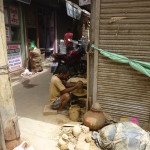
In a long niche alongside one lane, a half block from a large display of clay pots for sale, their maker rapidly formed one after another on his manual wheel. At the other end of the niche, past dozens of pots already formed, a colorfully dressed woman assisted him, pounding out the raw material like pizza dough.
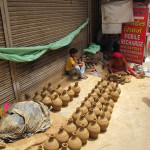
A visitor can easily get lost in this maze, but the truly lost are the thousands of children who flock to this area – and other areas of the sprawling city – running away from abuse at home or negligent parents or looking for something brighter in the lights of the city.
Many dream of Bollywood fame and fortune, with no idea how outlandish that dream may be.
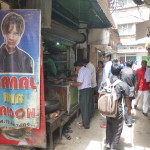
The street children survive on the food they can find free at shelters, charitable outreach and temples. The boys make money by stealing, pickpocketing, or gathering bottles and cans – and spend it on cheap drugs like glue to sniff and entertainment at the local cinemas, where they can also sleep more safely. The girls often are trapped in low end prostitution, keeping just a quarter of the 25 rupees (about 50 cents) they earn for each trick.
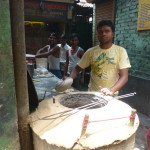
Back in the late 80s the sorrow and the pity of this life was captured in a famous and highly popular movie called Salaam Bombay. Many of the movie’s actors were children recruited from the streets. Aside from raising awareness of the problem, the movie had other positive effects that we were able to learn about on a special tour of Paharganj open to all.
The moviemakers and others founded the Salaam Baalak Trust (www.salaambaalaktrust.com) to help the children escape the trap of the streets and find a life of value – to make “dreams come true”. Just last year the effort, one of many throughout the cities of India, celebrated its 25th anniversary of outreach.
In our tour, we visited one of seventeen contact points for the children in Delhi, a very busy one just beside the rail station where many of the children arrive in Delhi and gather daily. Through response to calls on the help line or active appeals by social workers walking the train station and streets, the Trust workers try to make this contact point the gateway to a new life. It’s just a couple of small rooms, one jammed with desks and a few chairs, the other a small common room where children can spend a few hours playing games or watch movies on the television at set times. But, once there, children can stay in safety, find health services, or learn more about how they can better their lives. Each year, the rail station contact point will begin to help a thousand who would otherwise find no relief and little opportunity in their lives.
The next step is a shelter where the children can attend classes on behavioral and practical skills, as well as continue formal schooling – and then either decide to go back to their homes or stay until they are eighteen. Altogether, at the contact points and the shelters, the Trust is caring for about 5000 children at a time.
On several walls of the shelter we visited – one of five in the city – were pictures of the role models, former street children now living successful lives as technicians, business people, property owners and other professions. One even became a Bollywood actor.
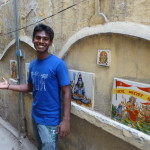
Our guide, a bright young man whose English was quite good and presentation skills impeccable, noted that he expected to put his picture on that wall some day. He was preparing to take university courses in business management, just like an older guide we met briefly who was shortly to head to Miami in the States for his year-long course.
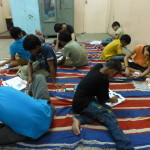
In one room of the shelter, we watched a dozen or so younger children at play, happily coloring figures in books. In the classroom next door, about forty children aged perhaps 6 to 12 were sitting on the carpeted floor doing work on social behavior in a combination of lecture and story-telling.
We had been told we could ask them questions, but once we walked among them and sat down, they were the ones reaching out to us for play or questioning. Mostly they wanted to make contact with the foreigners, especially physical contact. “What is your name? Where are you from?,” many said. And told us their own names and origins. One was from Uttar Pradesh, another all the way from Bangladesh. They wanted to shake hands, to play patty-cake and beat us at it with a thrill, or challenge us to arm wrestle. One smaller boy just wanted a hug.
Their glee and smiles were infectious, a hopeful sign we felt. We could envision how in a few years these children too would be able to put their success story pictures on the shelter walls in Paharganj. And find themselves far, far from the streets through which they had passed.
(Also, for more pictures from India, CLICK HERE to view the slideshow at the end of the India itinerary page.)


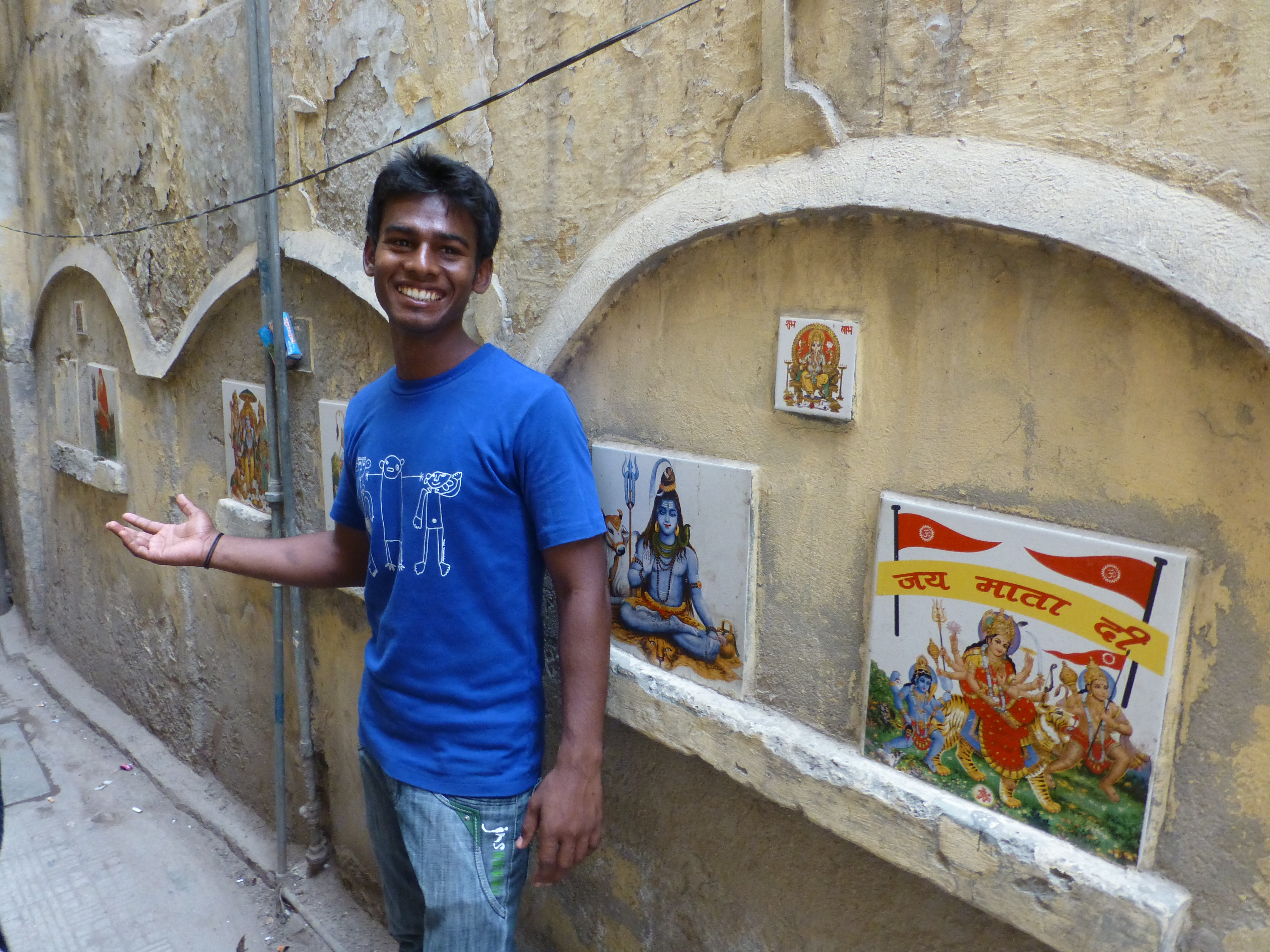

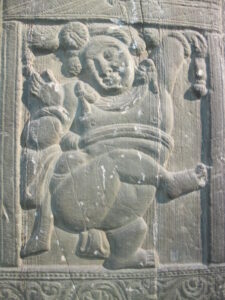
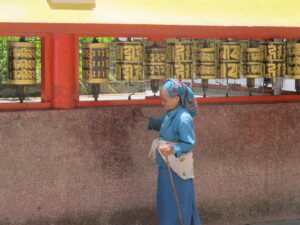
I must admit I missed out on some of this ground-level intimacy when I was there…